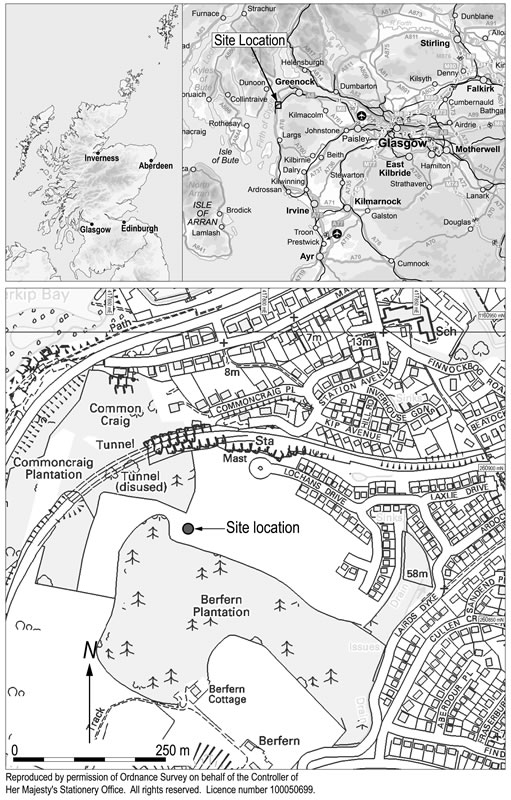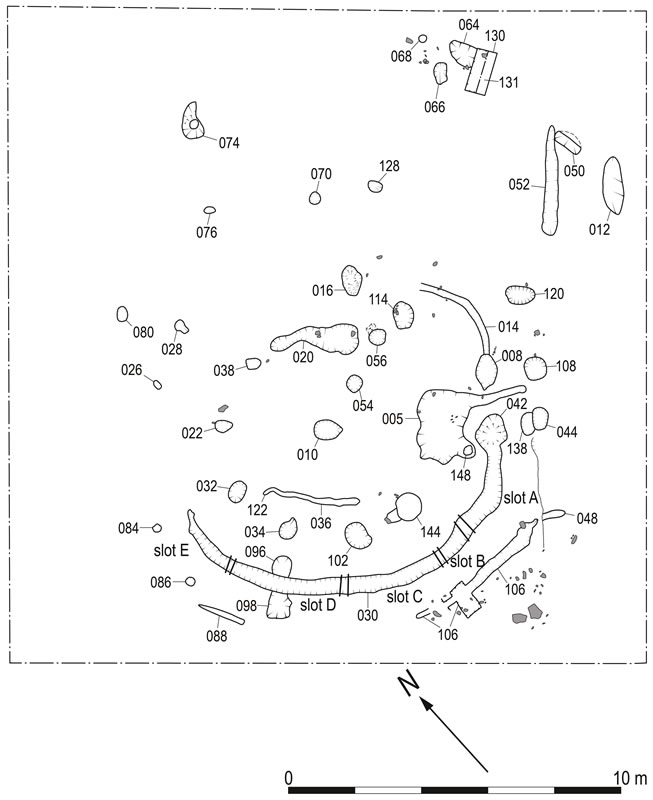The results of GUARD Archaeology's excavation of a Bronze Age settlement at Inverkip in Inverclyde has recently been published. In September 2014, a GUARD Archaeology team led by Christine Rennie carried out the excavation of a series of pits and ditches uncovered during an earlier trial trench evaluation of a new housing development for Stewart Milne Homes.
These were revealed to be the remains of a roundhouse defined by a partially surviving ring-groove 9.9 m in diameter. This originally held wattle panels, made from hazel, that formed the exterior wall of the roundhouse. Pieces of fired clay indicate that this wattle wall was daub-plastered for wind and weather proofing. A ring of seven post-holes formed a circle 7 m in diameter around a central pit within the interior of the house. These post-holes originally held oak and alder posts, which were the main structural supports for the roof, while the pit, which contained charcoal and burnt bone, was scorched on its sides and base, suggesting this was a hearth. Large post-holes located just outside the entrance indicate that the entranceway into the roundhouse was once defined by a porch.
While there was some radiocarbon dating evidence for residual Mesolithic and Early Bronze Age activity, the roundhouse appeared to date to between the fifteenth and thirteenth centuries BC (the Middle Bronze Age period). Eight pottery sherds from a Bronze Age cooking pot were recovered just inside the entrance while a scatter of worked flint and quartz debris and hearth or midden waste (naked barley and emmer wheat grains, hazelnut shells, and alder, hazel and oak charcoal) was strewn across the roundhouse.
The roundhouse at Inverkip is especially significant because of its lowland location in a region where such Bronze Age settlements tend to survive only in upland areas.
Excavation of a Bronze Age Ring-Groove House at Inverkip, Inverclyde by Christine Rennie is published in the Scottish Archaeological Journal 38 (2016). The fieldwork, post-excavation analyses and publication were funded by Stewart Milne Homes.


